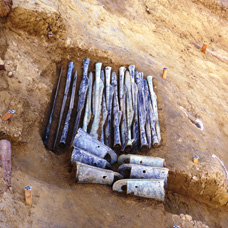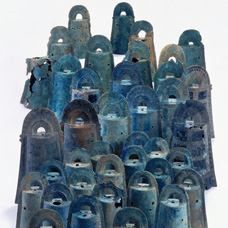The Kojiki
The Kojiki and Shimane
While it goes without saying that The Kojiki is an invaluable text and the 1300th anniversary of its compilation is an event worth commemorating, what exactly is its connection to Shimane? Why is there an interest in promoting it here?
Of the myths collected in The Kojiki, a third of them are set here in Shimane. “So much weight being placed on Shimane in such an important text shows that the prefecture played a large role in Japanese mythology. Since The Kojiki is also a historical text, it means that in some way, Shimane also figured largely in Japanese history.
Exactly why were these myths set in Shimane? Over the past 30 years, archaeological finds at Kojindani in Izumo City and Kamo-iwakura in Unnan City have overturned preconceived notions of Japanese history and have provided evidence of a powerful group having lived in this area, and so Shimane is being viewed with a lot of interest from an archaeological perspective as well. Both of these site names have mythological connections, as “Kojin” is the name of a god, and “Iwakura” is a term used to describe places considered to be particularly sacred because people thought gods came down to earth there. Although no one knows exactly why, these names point to some connections to the mythology set here.
These stories have not just come to be collected in an old text; they are continually shared from generation to generation, and live on here today. What makes them particularly interesting is that the places where these vibrant, exciting tales were set are places that you can visit even now. They are the very places that have preserved these tales through the ages. You can stand in places where gods stood and experience an atmosphere that has not changed all that much from the Age of the Gods. So, in connection with The Kojiki’s 1300th anniversary, why not take a trip off the beaten path and visit Shimane, and feel these myths come to life around you?

Kojindani was the first site where bronze swords and bells were found buried together.

The bronze bells unearthed at Kamo Iwakura are the most ever found at one single site.













